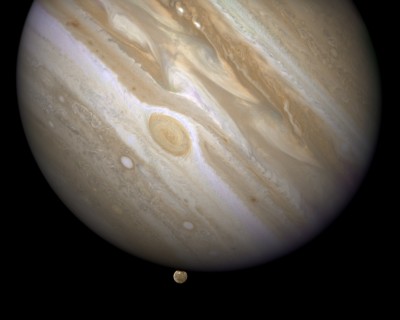VIEW: Formation of the Planets
Formation of the Planets

The solar system can be divided into two sections: inner and outer. The four planets closest to the Sun (Mercury, Venus, Earth and Mars) are called the "inner planets." Although in some ways these planets are very different from each other, they are alike in some ways as well. The inner planets are made of solid, rocky material.
What is the reason that all of the inner planets are rocky? Scientists believe that as the solar system was forming it was too warm in the inner part of the solar system for ice and gases to gather together with enough mass to create planets. Rocks, however, struck each other as gravity forces them together.
The outer planets (Jupiter, Saturn, Uranus and Neptune) are located past the asteroid belt. As you might guess from the name, these gas giants are largely made up of gases. The kinds of gases vary - Uranus has a methane atmosphere and Jupiter has hydrogen, helium and some ammonia. That doesn't mean that there is only gas in the outer part of the solar system. The outer planets have rocky moons, and Saturn's rings are made of ice and rock.
Building on theory of why the inner planets formed, scientists believe that the outer planets formed from gas partly because of temperature. It is cooler in the outer part of the solar system than it is in the inner part. Another reason is that the gases may have pushed heavier material into the inner part of the solar system.
Scientists are still researching why there is such a big difference in the size of gas giants. Jupiter, for example, is huge when compared to other planets. It is hypothesized that Jupiter developed first, accumulating much of the available dust, gas, and planetesimals in the outer part of the nebula disk with its gravitational force. In time computer models of the solar system may become good enough to account for these differences.
The following video outlines the formation of the planets in our solar system, and discusses how temperature and density differences in the nebula disk determined the elements that make up the planets. It also explains the importance of the force of gravity in our solar system.
Source http://www.solstation.com/stars/jovians.htm (fair use)
After you have completed this part of the lesson, you can check the box for this lesson piece in the course to mark it as complete